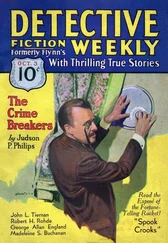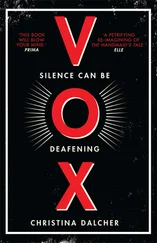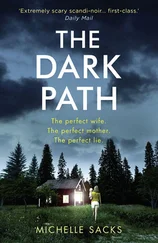And policing itself has changed dramatically. In the Golden Age, police forces were not yet integrated into the forty-two large forces of today, and major cities and their county were separately policed. This gave opportunities for productive rivalry as each strove to be the more efficient, but the separation was economically expensive and could cause difficulties in co-operation and communication. Chief constables, so far from coming up through the ranks, were usually retired colonels or brigadiers, experienced in leading men and promoting loyalty to a common purpose but occasionally over-authoritative, and representative of only one class. But they were able to know individual officers and were known by them, and both they and the policemen on the beat were familiar and reassuring figures to the much smaller and homogenous community they served. The job of policing our multicultural, overcrowded island and its stressed democracy is fundamentally different from the job in, for example, the twenties and thirties. I remember as an eight-year-old being told by my father that if ever I were alone and afraid or in difficulties I should find a policeman. Police officers are as ready to help a child in distress now as they were then, but I wonder how many parents in the more deprived inner-city areas would give that advice today. The crime novelist today needs to understand something of the ethos, ramifications and problems of this rapidly changing world, particularly if his detective is a police officer.
The Watson in the form of a sidekick, created to be less intelligent than the hero and to ask questions which the average reader might wish to put, has long since bowed out and, on the whole, to general relief. But the detective, whether professional or amateur, does need some character in whom he can rationally confide if the reader is to be provided with enough information to be engaged in the solution. For a professional detective it is usually the detective sergeant, whose background and personality provide a contrast to that of the hero and an ongoing relationship which is not always easy. The reader becomes involved in the sergeant’s different domestic background and different view of the job itself. Notable examples are Colin Dexter’s Morse and Lewis, Reginald Hill’s Dalziel and Pascoe, Ruth Rendell’s Wexford and Burden, and Ian Rankin’s Rebus and Siobhan Clarke, where we have the added advantage of a woman’s point of view. In the hands of such masters of the detective story they are subordinate to their boss in rank but not in importance. It is not surprising that Morse has been successfully replaced by Lewis, who has grown in authority since his promotion and now has a very different, more intellectual subordinate of his own, Sergeant Hathaway, to fulfil the function that was previously his.
A. A. Milne had a passion for detective stories, although he didn’t persist in writing them, and is best known for The Red House Mystery , first published in 1922. In a reissue of the novel in 1926, he wrote an entertaining introduction in which he addressed the issue of the Watson.
Are we to have a Watson? We are. Death to the author who keeps his unravelling for the last chapter, making all the other chapters but prologue to a five-minute drama. This is no way to write a story. Let us know from chapter to chapter what the detective is thinking. For this he must watsonize or soliloquize; the one is merely a dialogue form of the other, and, by that, more readable. A Watson, then, but not of necessity a fool of a Watson. A little slow, let him be, as so many of us are, but friendly, human, likeable…
“Friendly, human, likeable,” an accurate description of the Detective Sergeant Watsons of today, and long may they flourish.
Writers of the Golden Age, and indeed for some decades after, were little concerned with forensic or scientific research. The present system of forensic science laboratories was not yet in prospect and few of the victims were subjected to an autopsy, or if they were, this unpleasant procedure was seldom mentioned. Occasionally a postmortem was undertaken by the local general practitioner, who within hours was able to inform the detective from exactly which poison the victim died, a feat which would occupy a modern laboratory for some weeks.
The discovery of DNA is only one, but among the most important, of the scientific and technological discoveries which have revolutionised the investigation of crime. These include advanced systems of communication, the scientific analysis of trace elements, greater definition in the analysis of blood, increasingly sophisticated cameras which can identify bloodstains among multi-stained coloured surfaces, laser techniques which can raise fingerprints from skin and other surfaces which previously offered no hope of a successful print, and medical advances which affect the work of forensic pathologists. Modern writers of detective fiction need to be methodical in their research and the results integrated into the narrative, but not so intrusively that the reader is aware of the trouble taken and feels that he is being subjected to a brief lesson in forensic science. Some novelists manage so well without the inclusion of this scientific knowledge that the reader doesn’t feel the lack of it. I can remember only one instance in which Morse mentions a forensic science laboratory but, reading the books or watching the televised adaptations, we never for a moment suppose that the Thames Valley Constabulary is bereft of this necessary resource.
I like to do my own research, as do most detective novelists, and am grateful for the help I have received over the years both from the Metropolitan Police and from the scientists at the Lambeth Laboratory. But there have been mistakes. These usually arise, not from facts about which I am ignorant, but from those which I fondly and mistakenly imagine I already know. In one of my early novels I described a motorcyclist, disguised by his oilskins and goggles, “reversing noisily down the lane.” This led to a letter from a male reader complaining that, although I was usually meticulous in my choice of words, the sentence gave the impression that I thought that a two-stroke motorcycle could go backwards. So indeed I did. This mistake proved expensive, leading over the years to much correspondence, invariably from male readers, sometimes explaining in minute detail and occasionally with the aid of a diagram precisely why I was wrong. Salvation came some years ago in the form of a message on a postcard which said simply, “That motorbike-it can if it’s a Harley-Davidson.”
The search for a new location and fresh ideas continues. Despite the reasonable view of some critics that the detective story can’t exist until a society has developed an institutional system of law enforcement, a number of writers have with success looked to the past for inspiration. Private murder, as opposed to mass killing by the state, has been regarded as the unique crime in almost every society however primitive, an abomination to be avenged, if not by a legal system, by the family, involving the further shedding of blood, by banishment or public dishonour. The classical detective story can work in any age provided murder is regarded as an act which necessitates the discovery of the perpetrator and the cleansing of society of its stain. Writers who have returned to Victorian England include Peter Lovesey, with Sergeant Cribb and Constable Thackeray, and Anne Perry, whose novels feature Police Inspector Thomas Pitt and his wife, Charlotte, who assists him. Ellis Peters has written twenty novels which feature Brother Cadfael, a twelfth-century Benedictine monk, while Lindsey Davis goes back even further with her detective, Marcus Didius Falco, a private eye in ancient Rome. A notable comparative newcomer to the historical mystery is C. J. Sansom, who has become one of the most popular and accomplished crime writers. His novels are set in Tudor England, an age as dangerous as our own, particularly for those in the orbit of the formidable Henry VIII. His hero is a hunchback lawyer, Matthew Shardlake, sensitive, liberal, highly intelligent, whose life and the age of which he is part become so real that the sights, the voices, the very smell of Tudor England seem to rise from the page. The historical detective story is one of the most difficult to write well, requiring sensitive identification with the past, the ability to bring it vividly to life and meticulous research, but in expert hands it shows no sign of losing its popularity.
Читать дальше












